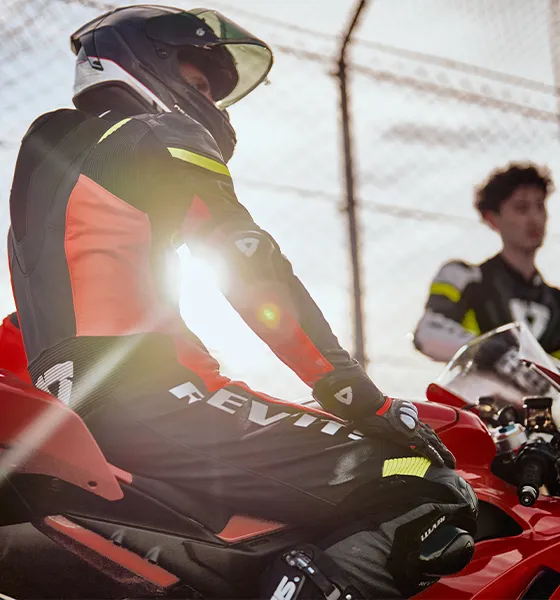Introduction:
In the exhilarating world of motorsports, speed and safety are of paramount importance. To ensure that racers are adequately protected while pushing the limits of performance, the racing suit has become an indispensable piece of gear. Designed with cutting-edge materials and advanced technology, the racing suit provides drivers with a second skin that not only enhances their performance but also shields them from potential hazards. In this article, we will delve into the evolution, features, and significance of the racing suit in the world of motorsports.
The Evolution of Racing Suits:
Early Days of Motorsports and Minimal Safety Measures:
In the early days of motorsports, drivers had limited safety equipment. Basic leather suits were used to shield drivers from wind and debris, but they offered minimal protection in the event of a crash. As the popularity of motorsports grew, so did the need for improved safety measures.
-
Leather to Fire-Resistant Materials:
In the mid-20th century, with the increasing speeds of vehicles, accidents became more severe. Consequently, the demand for better racing suits escalated. The introduction of fire-resistant materials, such as Nomex, revolutionized the industry. Nomex, a flame-resistant synthetic fiber, significantly reduced the risk of burns in case of a fire-related incident.
-
Technological Advancements and Customization:
As technology advanced, racing suits evolved to include multi-layered constructions for enhanced protection. Customization also became popular, allowing drivers to personalize their suits with sponsor logos and individual designs.
-
Essential Features of Modern Racing Suits:
-
Multi-Layered Construction:
Modern racing suits are typically constructed with multiple layers of fire-resistant materials. The layers work in conjunction to dissipate heat and protect the driver from potential fire-related accidents.
-
Ergonomic Design:
Racing suits are tailored to provide a snug fit that allows for unrestricted movement while driving. This ergonomic design enhances the driver’s comfort and reduces the risk of fatigue during extended races.
-
Impact Protection:
In addition to fire resistance, racing suits often incorporate impact-absorbing padding in critical areas like the elbows, knees, and shoulders. This extra layer of protection can mitigate the effects of collisions and crashes.
-
Breathability and Ventilation:
Driving at high speeds generates intense heat inside the cockpit. To counter this, modern racing suits are designed with breathable materials and ventilation panels to allow air circulation and maintain a comfortable internal temperature.
-
High-Visibility Elements:
Many racing suits feature high-visibility accents, such as reflective strips or vibrant colors, to increase the driver’s visibility on the track. This is particularly important in low-light conditions or during adverse weather.
III. Meeting Safety Standards and Regulations:
-
FIA Approval:
The Fédération Internationale de l’Automobile (FIA) is the governing body for motorsports, and it sets strict safety standards and regulations for racing suits. Before being used in official races, suits must undergo rigorous testing and obtain FIA approval to ensure they meet the required safety standards.
-
SFI Certification:
In North America, the Safety Equipment Institute (SEI) issues SFI (Safety Equipment Institute) certification for racing suits. This certification ensures that the suits meet specific safety standards established by the organization.
-
The Significance of Racing Suits in Motorsports:
-
Personal Safety:
The primary purpose of a racing suit is to protect the driver from fire-related incidents and other potential hazards during a race. By wearing a high-quality racing suit, drivers significantly reduce their risk of serious injury.
-
Enhanced Performance:
Racing suits are designed to enhance a driver’s performance kart racing suits on the track. The ergonomic design and lightweight materials allow for better control of the vehicle and increased focus on driving.
-
Identity and Branding:
Racing suits are not only functional but also serve as a canvas for personal and sponsor branding. Customized racing suits help drivers create a distinct identity and provide visibility to sponsors, making it an essential marketing tool in motorsports.
In the fast-paced and adrenaline-filled world of motorsports, the racing suit plays a vital role in ensuring the safety and performance of drivers. From the simple leather suits of the past to the multi-layered, technologically advanced suits of today, the evolution of racing suits reflects the ongoing commitment to safety in motorsports. As regulations continue to evolve, and technology advances further, we can expect racing suits to become even more efficient in safeguarding the brave men and women who push the limits on the track. The racing suit will forever remain an emblem of safety and a symbol of the indomitable spirit of motorsports athletes.
-
High-Visibility Elements:
Many racing suits feature high-visibility accents, such as reflective strips or vibrant colors, to increase the driver’s visibility on the track. This is particularly important in low-light conditions or during adverse weather.
III. Meeting Safety Standards and Regulations:
-
FIA Approval:
The Fédération Internationale de l’Automobile (FIA) is the governing body for motorsports, and it sets strict safety standards and regulations for racing suits. Before being used in official races, suits must undergo rigorous testing and obtain FIA approval to ensure they meet the required safety standards.
-
SFI Certification:
In North America, the Safety Equipment Institute (SEI) issues SFI (Safety Equipment Institute) certification for racing suits. This certification ensures that the suits meet specific safety standards established by the organization.
-
The Significance of Racing Suits in Motorsports:
-
Personal Safety:
The primary purpose of a racing suit is to protect the driver from fire-related incidents and other potential hazards during a race. By wearing a high-quality racing suit, drivers significantly reduce their risk of serious injury.
-
Enhanced Performance:
Racing suits are designed to enhance a driver’s performance kart racing suits on the track. The ergonomic design and lightweight materials allow for better control of the vehicle and increased focus on driving.
-
Identity and Branding:
Racing suits are not only functional but also serve as a canvas for personal and sponsor branding. Customized racing suits help drivers create a distinct identity and provide visibility to sponsors, making it an essential marketing tool in motorsports.
In the fast-paced and adrenaline-filled world of motorsports, the racing suit plays a vital role in ensuring the safety and performance of drivers. From the simple leather suits of the past to the multi-layered, technologically advanced suits of today, the evolution of racing suits reflects the ongoing commitment to safety in motorsports. As regulations continue to evolve, and technology advances further, we can expect racing suits to become even more efficient in safeguarding the brave men and women who push the limits on the track. The racing suit will forever remain an emblem of safety and a symbol of the indomitable spirit of motorsports athletes.




